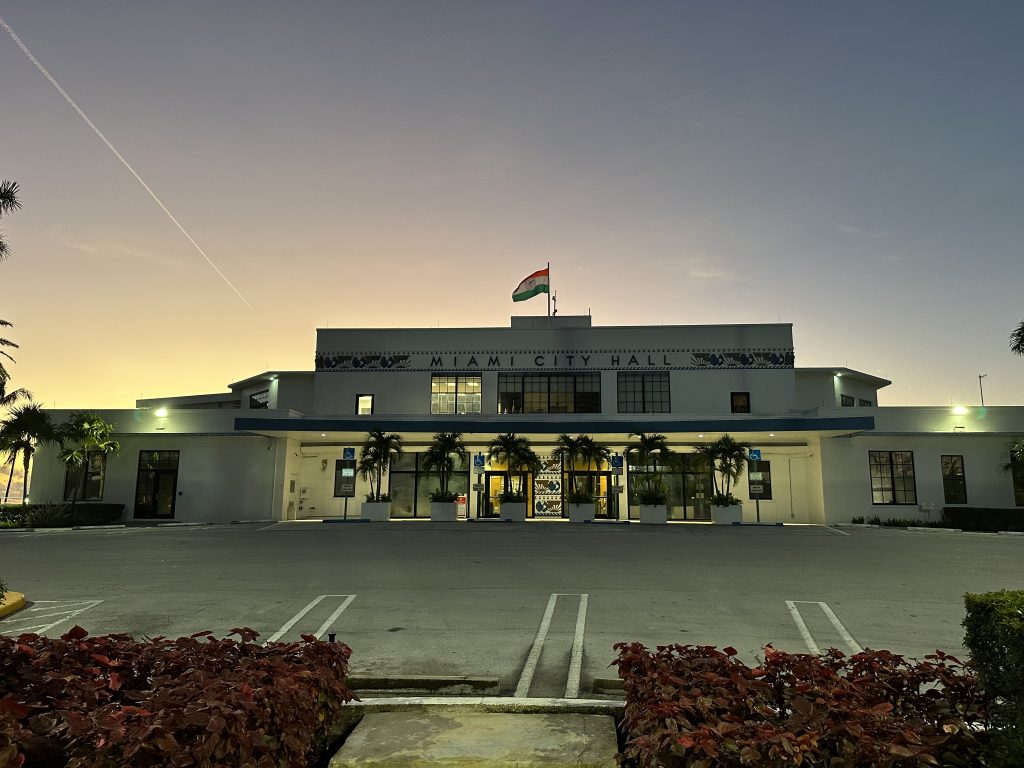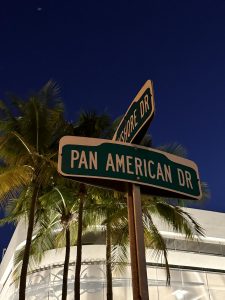
Dinner Key in Miami, Florida has a rich history that dates back to the early 20th century. Dinner Key was originally an island located in Biscayne Bay. In the early 1900s, the island was dredged and filled in order to create a larger land mass for development purposes. Originally used as a seaplane base, Dinner Key has played an important role in Miami’s development over  the years. Let’s take a closer look at the history of Dinner Key and its significance in Miami’s past.
the years. Let’s take a closer look at the history of Dinner Key and its significance in Miami’s past.
the early 1900s, aviation was still in its infancy, and seaplanes were a relatively new concept. In 1916, the United States Navy recognized the potential of seaplanes and established a seaplane training station in Key West, Florida. The Navy needed a nearby location for aircraft maintenance and repair, and Dinner Key, located just a few miles south of downtown Miami, was selected.
Dinner Key quickly became a hub for seaplane activity, with both the Navy and commercial airlines using the base for their operations. In 1927, Charles Lindbergh, who had just completed his historic solo flight across the Atlantic, landed at Dinner Key during a promotional tour. His visit to Miami helped establish the city as a major aviation hub.
airlines using the base for their operations. In 1927, Charles Lindbergh, who had just completed his historic solo flight across the Atlantic, landed at Dinner Key during a promotional tour. His visit to Miami helped establish the city as a major aviation hub.
The 1930s were a boom time for Dinner Key, with the base serving as a launching point for seaplanes to destinations all over the world. The Pan American Airways Clipper fleet, for example, used Dinner Key as their home base. In 1934, a new terminal building was constructed at the base, which was designed to accommodate both seaplanes and land-based planes.
 As World War II approached, the Navy expanded the base, constructing additional runways and hangars to accommodate the increased demand for aviation training. During the war, the base served as a training center for Naval aviators, as well as a maintenance and repair facility for planes serving in the Pacific theater
As World War II approached, the Navy expanded the base, constructing additional runways and hangars to accommodate the increased demand for aviation training. During the war, the base served as a training center for Naval aviators, as well as a maintenance and repair facility for planes serving in the Pacific theater
After the war, Dinner Key continued to serve as an important aviation hub, but with the advent of modern airports, the seaplane base’s importance diminished. In the 1960s, the City of Miami took over control of the base, and in 1968, the terminal building was converted into the
Coconut Grove Convention Center.
Today, Dinner Key is a popular destination for boaters, with a marina and park occupying the former seaplane base. The terminal building has been converted into the Miami City Hall and the Miami Police Department. Although the seaplanes are gone, Dinner Key’s rich history lives on, a testament to the important role it played in Miami’s past.
The name “Dinner Key” has an interesting origin. In the early 1900s, the area where the seaplane base was located was known as “Pan American Field”. However, the name “Dinner Key” was given to the area after a tragic event 
On February 22, 1836, a group of American soldiers under the command of Major William Lauderdale were attacked by Seminole Indians near the Miami River. The  soldiers had been sent to the area to build a fort and protect the growing number of settlers in the region. During the attack, a soldier named Robert Cotton was killed and his body was left behind. When the soldiers returned to retrieve the body, they found that it had been partially eaten by alligators.
soldiers had been sent to the area to build a fort and protect the growing number of settlers in the region. During the attack, a soldier named Robert Cotton was killed and his body was left behind. When the soldiers returned to retrieve the body, they found that it had been partially eaten by alligators.
The soldiers, in an act of revenge, killed several alligators and left their bodies on a nearby island. This island became known as “Alligator Key”. However, over time, the name was changed to “Dinner Key” as a macabre joke, referencing the fact that the alligators had been killed for dinner.
When the seaplane base was established in the area, the name “Dinner Key” was used to refer to the entire location. Despite the unusual and somewhat morbid origin






 Facebook
Facebook
 Twitter
Twitter
 Pinterest
Pinterest
 Copy Link
Copy Link
